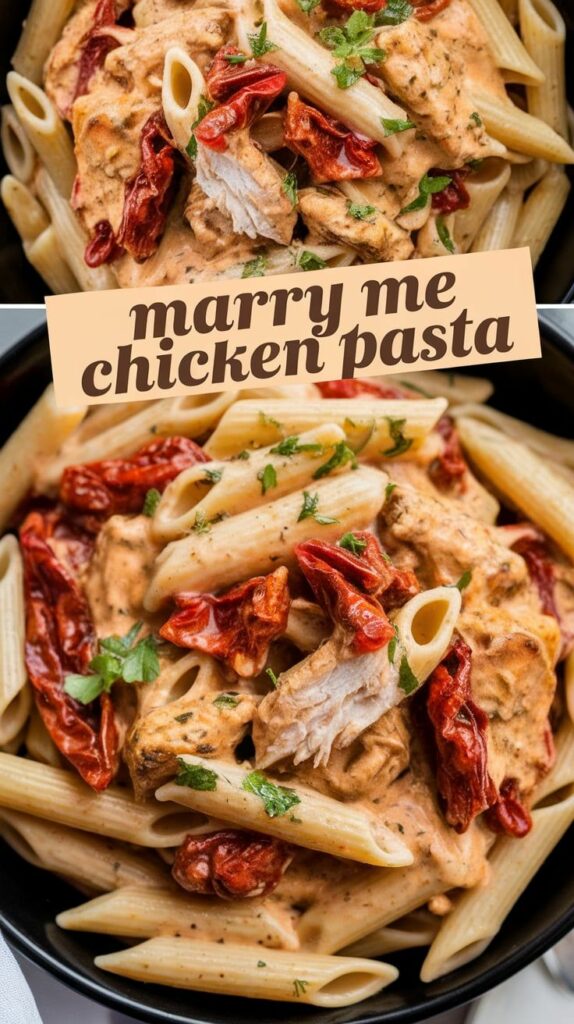Growing up in the South, I learned that a black eyed peas recipe is more than just a dish – it’s a culinary tradition passed down through generations. This Southern comfort food represents warmth, family, and rich cultural heritage that brings people together around the dinner table.
My version of the classic black eyed peas recipe simplifies the cooking process while maintaining all the authentic flavors that make this dish so beloved. Whether you’re preparing for a family gathering or wanting to explore traditional Southern cuisine, this recipe will guide you through creating a delicious and hearty meal.
Black eyed peas are not just delicious – they’re packed with nutrition and have deep roots in Southern cooking. I’ll walk you through every step of creating a mouthwatering dish that captures the essence of Southern comfort food, making it easy for home cooks of all skill levels to master this classic recipe.
Why Black Eyed Peas Are a Southern Staple
Southern black eyed peas represent more than just a simple legume – they’re a culinary treasure deeply rooted in Southern culture and tradition. My journey through Southern kitchens has revealed these humble beans carry profound significance beyond their nutritional value.
Black eyed peas tradition runs deep in Southern cuisine, connecting generations through a shared culinary experience. These small, cream-colored beans with distinctive black spots have been a staple on Southern tables for centuries.
Cultural Significance in Southern Cuisine
In Southern kitchens, black eyed peas symbolize more than sustenance. They represent:
- Community and shared meals
- Resilience during challenging times
- A connection to agricultural heritage
- Storytelling through food
Health Benefits and Nutritional Value
These incredible legumes pack a powerful nutritional punch. Black eyed peas are rich in:
- Plant-based protein
- Dietary fiber
- Essential minerals like iron and potassium
- Low-calorie nutrition
Traditional New Year’s Day Connection
One of the most cherished Southern traditions involves eating black eyed peas on New Year’s Day. Locals believe these beans bring good luck, prosperity, and financial fortune for the coming year. This practice stems from historical roots during the Civil War era, when these resilient crops often sustained communities during difficult times.
Essential Ingredients for Perfect Black Eyed Peas Recipe
Crafting the ultimate Southern black eyed peas recipe starts with selecting the right black eyed peas ingredients. I’ve learned through years of cooking that each component plays a crucial role in creating a memorable dish that captures the essence of Southern cuisine.
For authentic Southern recipe ingredients, you’ll want to gather these key items:
- Dried or fresh black eyed peas (2 cups)
- Smoked ham hock or bacon (for rich flavor)
- Onion (1 medium, diced)
- Garlic (2-3 cloves, minced)
- Salt and black pepper
- Chicken or vegetable broth
The secret to remarkable black eyed peas lies in quality ingredients and traditional preparation. Fresh ingredients make a significant difference in developing deep, complex flavors characteristic of Southern cooking.
Optional ingredients that elevate the dish include:
- Celery (diced)
- Bell pepper
- Fresh thyme
- Bay leaf
I recommend choosing high-quality, fresh ingredients to ensure your black eyed peas taste authentically Southern. Each component contributes unique flavors that transform simple legumes into a memorable culinary experience.
My Time-Tested Black Eyed Peas Recipe
Crafting the perfect homemade black eyed peas requires passion, technique, and a few secret ingredients. My family recipe has been perfected over generations, bringing authentic Southern flavor to every pot.
Creating delicious black eyed peas starts with selecting the right ingredients and understanding crucial cooking techniques. I’ll walk you through my tried-and-true method for making this classic Southern dish.
Fresh vs. Dried Peas: Making the Right Choice
When preparing homemade black eyed peas, choosing between fresh and dried peas can impact your final dish. Here’s a quick breakdown:
- Fresh peas: Quick cooking time, vibrant flavor
- Dried peas: More intense flavor, longer preparation
- Canned peas: Convenient but less flavorful option
Seasoning Secrets for Maximum Flavor
Black eyed peas seasoning is an art form. My secret blend includes:
- Smoked paprika
- Fresh garlic
- Cracked black pepper
- Cayenne for subtle heat
The key to exceptional black eyed peas seasoning is balancing savory and spicy elements. Start with small amounts and adjust to taste.
Ham Hock Alternatives
Not everyone enjoys ham hocks, so I’ve developed delicious alternatives:
- Smoked turkey leg
- Vegetable broth for vegetarian option
- Bacon for added smokiness
- Andouille sausage for spicy kick
Step-by-Step Cooking Instructions
Mastering how to cook black eyed peas requires patience and the right technique. I’ll guide you through the perfect cooking method that ensures tender, flavorful legumes every time.
Before you start cooking black eyed peas, preparation is key. If using dried peas, follow these essential steps:
- Rinse the peas thoroughly under cold water
- Sort through and remove any damaged or discolored peas
- Soak peas overnight or for at least 6-8 hours
When it’s time to cook, my black eyed peas cooking time typically ranges between 45-60 minutes. Here’s my foolproof method:
- Drain soaked peas and place in a large pot
- Cover with fresh water or chicken broth
- Add diced onions, garlic, and your favorite seasonings
- Bring to a boil, then reduce heat to a gentle simmer
The secret to perfectly tender black eyed peas is maintaining a low, steady temperature. Stir occasionally and check the liquid level, adding more if needed. Taste test around 45 minutes to determine doneness – they should be soft but not mushy.
Pro tip: For extra flavor, consider adding a ham hock or smoked turkey wing during cooking. These ingredients infuse the peas with rich, smoky undertones that elevate the entire dish.
Tips for Perfectly Tender Black Eyed Peas
Cooking black eyed peas can be tricky, but with the right black eyed peas cooking tips, you’ll create a delicious dish every time. I’ve learned several key techniques to ensure your peas are tender, flavorful, and never mushy.
Achieving the perfect texture requires careful attention to detail. Let me share some insider strategies that will transform your black eyed peas from ordinary to extraordinary.
Avoiding Common Cooking Mistakes
Many home cooks make critical errors when preparing black eyed peas. Here are some top mistakes to avoid:
- Never add salt at the beginning of cooking, as it can toughen the beans
- Avoid overcooking, which leads to mushy texture
- Skip the high heat – slow and steady wins with legumes
- Don’t forget to sort and rinse dried peas before cooking
Smart Storage Solutions
Learning how to store black eyed peas correctly extends their deliciousness and prevents food waste. My go-to storage methods ensure maximum flavor and quality:
- Refrigerate cooked peas in an airtight container
- Use within 3-5 days for best taste
- Freeze in portion-sized containers for long-term storage
When reheating, add a splash of water or broth to maintain moisture. Microwave or gently warm on the stovetop, stirring occasionally to prevent sticking.
Delicious Side Dish Pairings
When planning what to serve with black eyed peas, Southern side dishes offer an incredible range of flavor combinations that elevate this classic legume. I’ve discovered some mouthwatering pairings that transform a simple black eyed peas dish into a memorable meal.
Classic Southern side dishes that complement black eyed peas perfectly include:
- Crispy cornbread with a golden crust
- Tender collard greens seasoned with smoked ham
- Fluffy white rice or dirty rice
- Tangy coleslaw
- Fried green tomatoes
My favorite traditional Southern side dishes create a symphony of textures and flavors. Cornbread provides a sweet, crumbly contrast to the creamy black eyed peas. Collard greens bring a rich, earthy element that complements the beans’ mild taste. For those seeking protein, adding smoked sausage or ham can transform the dish into a complete meal.
If you’re looking to mix things up, consider adding some unexpected side dishes. Roasted sweet potatoes, grilled okra, or a fresh cucumber salad can add surprising depth to your black eyed peas experience. The key is balancing flavors and creating a harmonious plate that celebrates Southern culinary traditions.
Remember, the best Southern meals are about creating connections through food. These side dish pairings aren’t just about taste—they’re about sharing love and tradition on a single plate.
Variations and Modern Twists on Traditional Recipe
When it comes to black eyed peas recipe variations, I love exploring creative ways to transform this classic Southern dish. Modern Southern cooking offers exciting opportunities to reimagine traditional flavors while keeping the soul of the original recipe intact. My favorite approach is mixing unexpected ingredients that bring new life to this beloved staple.
Vegetarian cooks can swap out traditional ham hock with smoked paprika or chipotle peppers to maintain that rich, deep flavor profile. For international flair, I recommend incorporating Mexican-inspired seasonings like cumin and cilantro, or trying an Indian-style approach with garam masala and turmeric. These black eyed peas recipe variations can turn a simple side dish into a star attraction on your dinner table.
Regional adaptations can make this dish truly unique. In my kitchen, I’ve experimented with adding roasted butternut squash, crispy bacon bits, or even a splash of bourbon for unexpected depth. Modern Southern cooking is all about respecting tradition while embracing culinary creativity. Whether you’re catering to dietary restrictions or simply looking to surprise your guests, these variations ensure your black eyed peas remain both delicious and versatile.
Remember, the best recipes are those that tell a story and invite personal interpretation. So don’t be afraid to play, experiment, and make this classic dish your own. Your taste buds will thank you for the delicious adventure!



